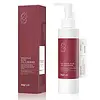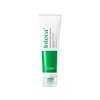What's inside
What's inside
 Key Ingredients
Key Ingredients

 Benefits
Benefits

 Concerns
Concerns

 Ingredients Side-by-side
Ingredients Side-by-side

Water
Skin ConditioningGlycerin
HumectantCoco-Betaine
CleansingDipropylene Glycol
HumectantPotassium Cocoyl Glycinate
Acrylates Copolymer
Potassium Cocoate
EmulsifyingSalicylic Acid
MaskingCaprylyl Glycol
EmollientHydroxyacetophenone
AntioxidantPolyglyceryl-10 Myristate
Skin ConditioningEthylhexylglycerin
Skin ConditioningHibiscus Syriacus Flower Extract
AntioxidantDipotassium Glycyrrhizate
HumectantGlycolic Acid
BufferingXylitylglucoside
HumectantAnhydroxylitol
HumectantXylitol
HumectantGlucose
HumectantWater, Glycerin, Coco-Betaine, Dipropylene Glycol, Potassium Cocoyl Glycinate, Acrylates Copolymer, Potassium Cocoate, Salicylic Acid, Caprylyl Glycol, Hydroxyacetophenone, Polyglyceryl-10 Myristate, Ethylhexylglycerin, Hibiscus Syriacus Flower Extract, Dipotassium Glycyrrhizate, Glycolic Acid, Xylitylglucoside, Anhydroxylitol, Xylitol, Glucose
Water
Skin ConditioningSodium C14-16 Olefin Sulfonate
CleansingAcrylates Copolymer
Glycerin
HumectantCoco-Betaine
CleansingPropanediol
SolventArginine
MaskingCitric Acid
BufferingSalicylic Acid
MaskingPotassium Benzoate
PreservativeButylene Glycol
HumectantSorbitol
HumectantCoco-Glucoside
CleansingCandida Bombicola/Glucose/Methyl Rapeseedate Ferment
AntimicrobialHelianthus Annuus Seed Oil
EmollientDipropylene Glycol
HumectantDecyl Glucoside
CleansingPolyquaternium-10
Lactobacillus Ferment Lysate
Skin ConditioningMentha Arvensis Leaf Oil
MaskingTrisodium Ethylenediamine Disuccinate
Cymbopogon Schoenanthus Extract
Skin ConditioningEthoxydiglycol
Humectant1,2-Hexanediol
Skin ConditioningAsiaticoside
AntioxidantAsiatic Acid
Skin ConditioningMadecassic Acid
Skin ConditioningHamamelis Virginiana Leaf Extract
Skin ConditioningOenothera Biennis Flower Extract
AstringentPueraria Lobata Root Extract
HumectantPinus Palustris Leaf Extract
TonicUlmus Davidiana Root Extract
Skin ConditioningWater, Sodium C14-16 Olefin Sulfonate, Acrylates Copolymer, Glycerin, Coco-Betaine, Propanediol, Arginine, Citric Acid, Salicylic Acid, Potassium Benzoate, Butylene Glycol, Sorbitol, Coco-Glucoside, Candida Bombicola/Glucose/Methyl Rapeseedate Ferment, Helianthus Annuus Seed Oil, Dipropylene Glycol, Decyl Glucoside, Polyquaternium-10, Lactobacillus Ferment Lysate, Mentha Arvensis Leaf Oil, Trisodium Ethylenediamine Disuccinate, Cymbopogon Schoenanthus Extract, Ethoxydiglycol, 1,2-Hexanediol, Asiaticoside, Asiatic Acid, Madecassic Acid, Hamamelis Virginiana Leaf Extract, Oenothera Biennis Flower Extract, Pueraria Lobata Root Extract, Pinus Palustris Leaf Extract, Ulmus Davidiana Root Extract
Ingredients Explained
These ingredients are found in both products.
Ingredients higher up in an ingredient list are typically present in a larger amount.
Acrylates Copolymer is used as a film-forming agent and texture enhancer.
After applied, Acrylates Copolymer forms a thin film cover that helps skin feel more soft. It can help sunscreens become more water-resistant.
It is also used to make a product more thick.
Learn more about Acrylates CopolymerCoco-Betaine is the natural version of Cocamidopropyl Betaine. It is often derived from coconuts.
Coco-Betaine is a surfactant, meaning it helps remove dirt and oil from the skin.
Dipropylene Glycol is a synthetically created humectant, stabilizer, and solvent.
This ingredient helps:
Dipropylene glycol is technically an alcohol, but it belongs to the glycol family (often considered part of the ‘good’ alcohols). This means it is hydrating and gentle on skin unlike drying solvent alcohols like denatured alcohol.
As a masking agent, Dipropylene Glycol can be used to cover the smell of other ingredients. However, it does not have a scent.
Studies show Dipropylene Glycol is considered safe to use in skincare.
Learn more about Dipropylene GlycolGlycerin is already naturally found in your skin. It helps moisturize and protect your skin.
A study from 2016 found glycerin to be more effective as a humectant than AHAs and hyaluronic acid.
As a humectant, it helps the skin stay hydrated by pulling moisture to your skin. The low molecular weight of glycerin allows it to pull moisture into the deeper layers of your skin.
Hydrated skin improves your skin barrier; Your skin barrier helps protect against irritants and bacteria.
Glycerin has also been found to have antimicrobial and antiviral properties. Due to these properties, glycerin is often used in wound and burn treatments.
In cosmetics, glycerin is usually derived from plants such as soybean or palm. However, it can also be sourced from animals, such as tallow or animal fat.
This ingredient is organic, colorless, odorless, and non-toxic.
Glycerin is the name for this ingredient in American English. British English uses Glycerol/Glycerine.
Learn more about GlycerinSalicylic Acid (also known as beta hydroxy acid or BHA) is a well-known ingredient for treating skin that struggles with acne and clogged pores. It exfoliates both the skin's surface and deep within the pores to help clear out buildup, control oil, and reduce inflammation.
Unlike AHAs (alpha hydroxy acids), salicylic acid is oil-soluble. This allows it to penetrate into pores which makes it especially effective for treating blackheads and preventing future breakouts.
Salicylic acid is also known for its soothing properties. It has a similar structure to aspirin and can calm inflamed or irritated skin, making it a good option for acne-prone skin that is also sensitive.
Concentrations of 0.5-2% are recognized by the U.S. FDA as an over-the-counter topical acne product.
It can cause irritation and/or dryness if one's skin already has a compromised moisture barrier, so it's best to focus on repairing that before introducing this ingredient into your routine.
While salicylic acid does not increase sun sensitivity, it’s still important to wear sunscreen daily to protect your skin.
If you are looking for the ingredient called BHA or Butylated Hydroxyanisole, click here.
Learn more about Salicylic AcidWater. It's the most common cosmetic ingredient of all. You'll usually see it at the top of ingredient lists, meaning that it makes up the largest part of the product.
So why is it so popular? Water most often acts as a solvent - this means that it helps dissolve other ingredients into the formulation.
You'll also recognize water as that liquid we all need to stay alive. If you see this, drink a glass of water. Stay hydrated!
Learn more about Water